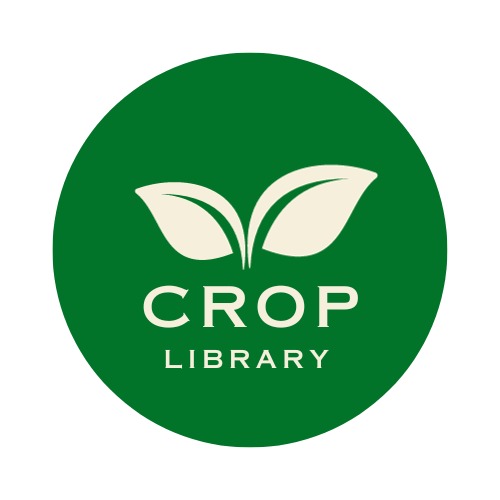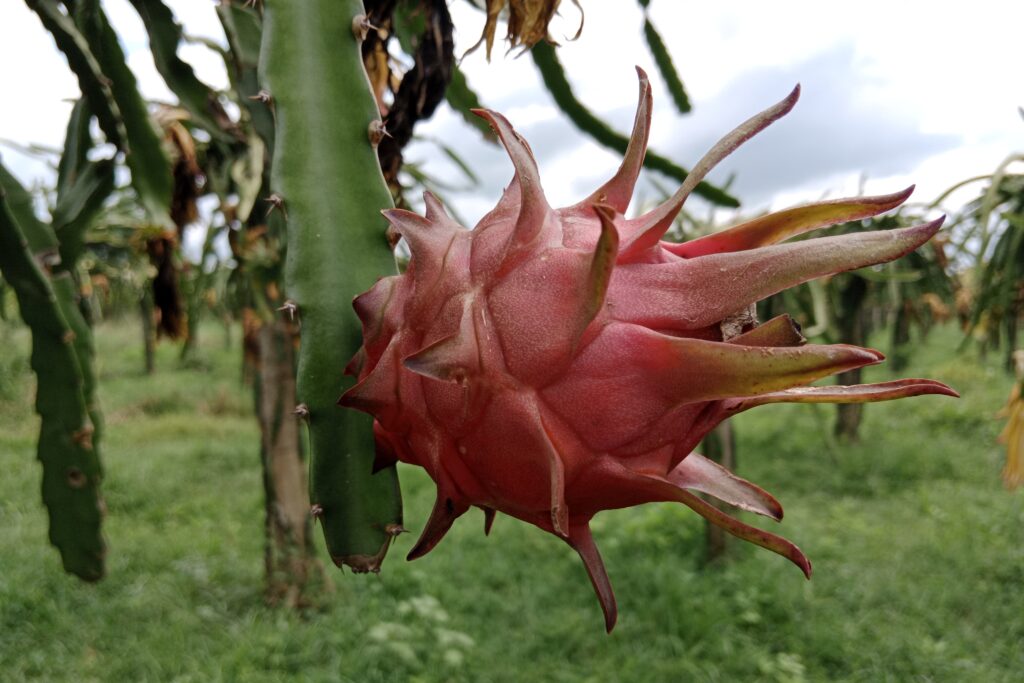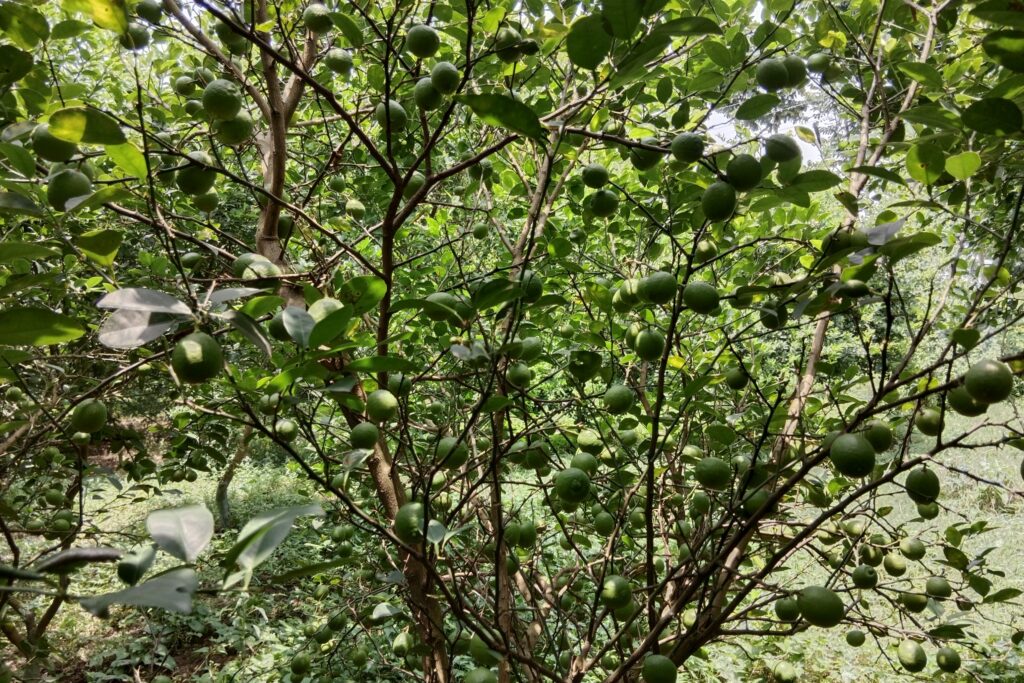Signal transduction in plant is an essential cellular process that allows cells to detect and respond to external stimuli, translating these signals into targeted biological responses. This process involves multiple molecular events, such as receptor activation, secondary messenger production, and intracellular signaling pathways. It plays a crucial role in regulating various physiological functions, including growth, development, hormone signaling, and stress responses. By influencing gene expression and cellular activities, signal transduction enables organisms to adapt to both internal and external environmental changes. Key components include receptors, intracellular signaling mechanisms, photoreceptors involved in light responses, and hormones that mediate diverse biological functions.
Signal perception, transduction and response
Signal transduction in the plant is the process by which cells perceive external signals and translate them into precise intracellular actions that govern behavior and function. This intricate process consists of several key steps:
Signal Perception
- Cells detect extracellular signals such as hormones, growth factors, or environmental cues.
- These signals bind to specific receptor proteins on the cell surface, initiating communication.
Receptor Activation
- Receptors, often located in the plasma membrane, are activated upon signal binding.
- This activation triggers a cascade of molecular events inside the cell.
Intracellular Signal Transduction
- The activated receptor initiates signaling pathways involving molecules like second messengers (e.g., cAMP, Ca²⁺) and protein kinases.
- These pathways amplify the signal and direct it to the appropriate cellular machinery.
Effector Activation
- Activated signaling molecules regulate metabolic enzymes to modulate biochemical pathways.
- Cytoskeletal proteins are reorganized, affecting cell shape, movement, and growth.
Transcriptional Regulation
- Signals often reach the nucleus, where they activate transcription factors.
- These transcription factors bind DNA, regulating the expression of target genes.
Cellular Responses
- Gene Transcription: Leads to long-term changes such as cell differentiation or stress adaptation.
- Biochemical Adjustments: Immediate changes in metabolic activity to meet cellular demands.
- Morphological Changes: Altered cytoskeletal dynamics enable changes in cell shape, polarity, or migration.
Key Pathways in Intracellular Signal Transduction
Signal transduction involves several pathways that regulate various cellular functions. These pathways convert external stimuli into specific intracellular responses, ensuring cellular adaptation and coordination.
cAMP Pathway
The cAMP pathway is a widely conserved signaling mechanism:
Mechanism
A signaling molecule binds to a G protein-coupled receptor (GPCR), triggering the activation of an associated G protein, which subsequently stimulates adenylyl cyclase to convert ATP into cyclic AMP (cAMP). Acting as a second messenger, cAMP activates protein kinase A (PKA), while phosphodiesterases degrade cAMP into AMP to ensure proper signal termination.
Calcium Signaling
Calcium is a versatile intracellular signaling molecule, essential for processes such as muscle contraction, metabolism, and intracellular communication.
Calcium Regulation and Transport
Extracellular Environment
- Free calcium concentration ranges from 0.5 to 1 mM.
- Calcium-ATPases actively pump calcium out of the cytosol to maintain low intracellular calcium levels.
Cytosol
- Cytosolic calcium levels are maintained at extremely low concentrations (0.0001–0.00035 mM) for rapid and transient signaling.
- Calcium binds to proteins such as calmodulin, triggering diverse cellular responses.
Intracellular Compartments
- Mitochondria: Stores ~1 mM calcium and regulates its uptake and release.
- Endoplasmic Reticulum (ER): Serves as the primary calcium reservoir (1–2 mM), releasing calcium through IP3-sensitive channels.
- Vacuoles (plants) or Lysosomes (animals): Store calcium and utilize Ca²⁺/H⁺ antiporters for transport.
Membrane Transport
- Active transport: Calcium-ATPases and Ca²⁺/H⁺ antiporters move calcium against its gradient.
- Passive flow: Calcium channels mediate calcium influx along its electrochemical gradient.
MAPK Pathway
The Mitogen-Activated Protein Kinase (MAPK) pathway is a highly conserved cascade that converts extracellular signals into specific cellular outcomes.
MAPK Signaling Cascade
- Upstream Signals: Stimuli such as growth factors, stress, or cytokines trigger this pathway.
- Cascade Activation
- MAPKKK: Phosphorylates and activates MAPKK.
- MAPKK: Further amplifies the signal by activating MAPK.
- MAPK: Phosphorylates target proteins to elicit precise responses.
Cellular Outputs
Kinases
Initiate secondary signaling events.
Metabolic Enzymes
Alter cellular biochemical processes.
Transcription Factors
Regulate gene expression, influencing processes such as cell proliferation, differentiation, or stress adaptation.
Each of these pathways operate in a tightly controlled manner to ensure cellular homeostasis and precise responses to stimuli.
Photoreceptors and responses to light
Plants rely on photoreceptors to perceive light and respond to it in ways that regulate their growth, development, and adaptation to changing environmental conditions. These responses are crucial for maximizing photosynthesis and ensuring survival in varying light environments.
Photomorphogenesis: Light-Dependent Development
Photomorphogenesis refers to the development of plants under the influence of light. Light acts as a critical environmental cue, shaping various aspects of plant growth and adaptation.
Key Light-Dependent Growth Patterns:
- Etiolation
Growth in the absence of light, allowing seedlings to prioritize rapid emergence into a light-rich environment. - Light-Dependent Germination
Some seeds require specific light conditions (red or far-red light) for germination.
- Sun and Shade Leaves
Leaves modify their structure based on light availability—thicker in sunlit environments and thinner in shaded areas.
Developmental Processes Regulated by Light
Meristem Activity
Light cues determine the activity of growth zones.
Dormancy
Light signals break or maintain dormancy in seeds and buds.
Flowering Time
Plants are categorized as short-day, long-day, or day-neutral, depending on their response to photoperiod.
Formation of Storage Organs
Light influences the development of bulbs, tubers, and other storage tissues.
Cold Acclimation and Tolerance
Photoperiod prepares plants for seasonal cold through biochemical and structural changes.
Leaf Abscission
Shorter days and reduced light lead to leaf shedding in deciduous plants.
Related Article: Secondary Metabolites
Differences Between Etiolated and Photomorphogenic Seedlings
The developmental pathway of seedlings differs significantly depending on the presence or absence of light.
Etiolated Seedlings (Growth in Darkness)
- Apical Hook Formation: Protects the apical meristem and young leaves during soil emergence.
- Closed Cotyledons: Prevents unnecessary energy loss by avoiding photosynthesis in darkness.
- Elongated Hypocotyl: Promotes rapid upward growth to reach the surface and find light.
- Reduced Root Growth: Resources are allocated to vertical growth rather than nutrient absorption.
Photomorphogenic Seedlings (Growth in Light)
- Straightened Apical Hook: Light signals trigger the removal of the hook to expose cotyledons.
- Expanded Green Cotyledons: Photosynthesis begins, supplying energy for growth.
- Short Hypocotyl: Growth stabilizes as the seedling adjusts to light conditions.
- Extensive Root Growth: Roots grow to optimize nutrient and water uptake, supporting photosynthesis.
Significance of Light Responses in Plants
- Etiolated Growth: Ensures rapid soil emergence and light acquisition, which is critical for survival in shaded or buried environments.
- Photomorphogenesis:
- Optimizes light capture through green cotyledons and adjusted leaf structures.
- Enhances photosynthesis and nutrient absorption for long-term growth.
- Prepares plants for environmental changes, such as seasonal shifts, light fluctuations, and stress conditions.
Plant Photoreceptors and Their Functions
Plants use specialized photoreceptors to detect and respond to different wavelengths of light, controlling key developmental processes.
The photoreceptors and their role:
UVR8
- Inhibition of cell elongation.
- Curled leaves.
- Growth regulation in response to UV-B light.
Cryptochromes
- Stomatal movement.
- Pigment synthesis and de-etiolation.
- Flowering and circadian rhythm regulation.
- Shade avoidance and stress tolerance.
- Seed dormancy and response to light stress.
Phototropins
- Phototropism: Growth toward light.
- Chloroplast movement.
- Apical dominance.
- Leaf expansion.
Zeitlupes
- Regulate flowering.
- Synchronize circadian clock.
Phytochromes
- Regulate photoperiodic response, germination, and dormancy.
- Control flowering, de-etiolation, and leaf expansion.
- Influence plant height, branching, and gravitropism.
- Enhance freezing tolerance and defense mechanisms.
Phototropism
Definition: Growth aligned with a light gradient, enabling plants to optimize photosynthesis.
Photoperiodism and Flowering
Short-Day Plants
Flower when the dark period exceeds a specific threshold.
Long-Day Plants
Flower when the light period exceeds a defined threshold.
Day-Neutral Plants
Flowering is independent of light or dark period duration.
Components of Photoreceptors
- Core Proteins: Structural components of photoreceptors.
- Chromophores: Light-absorbing pigments enabling signal detection.
Hormones: Signal transduction in plant
- Chemical messengers produced in one cell or tissue.
- Modulate cellular processes in other tissues.
- Transported to sites of action.
- Bind to specific receptors, acting at very low concentrations.
- A single hormone can initiate multiple responses.
- Active concentrations are regulated by biosynthesis, conjugation, and degradation.
Major Plant Hormones
- Auxin (Indolyl-3-acetic acid): Growth hormone.
- Cytokinins: Regulators of cell division.
- Gibberellins (GAs): Control plant height and seed germination.
- Abscisic Acid (ABA): Manages maturation, stress signals, and dormancy.
- Ethylene: Gaseous hormone responsible for fruit ripening.
- Brassinosteroids: Steroid hormones with multiple growth effects.
Auxin
Auxin, a pivotal plant hormone, plays a central role in regulating growth and development. Its effects and mechanisms of action span across various physiological and molecular pathways:
Discovery and Responses
- Physiological Effects
- Promotes Cell Elongation: Auxin acidifies the apoplast by activating proton pumps (H⁺-ATPases), increasing cell wall extensibility and enabling cell expansion.
- Phototropic and Gravitropic Responses: Auxin redistributes laterally, accumulating asymmetrically in tissues to drive directional growth toward light or gravity.
- Apical Dominance: Auxin from the shoot apex suppresses lateral bud growth, maintaining dominance of the main shoot.
- Root Formation and Xylem Differentiation: It induces adventitious root formation and aids in vascular differentiation.
- Inhibition of Leaf Abscission and Fruit Growth Stimulation: Auxin delays leaf shedding and promotes fruit development.
Auxin Signal Transduction
- Low Auxin Levels
- Repression of Growth: Aux/IAA proteins bind Auxin Response Factors (ARFs), inhibiting the transcription of auxin-responsive genes. This repression prevents auxin-mediated processes.
2. High Auxin Levels
- Activation of Growth: Auxin binds to Transport Inhibitor Response 1 (TIR1), a component of the SCF ubiquitin ligase complex. This triggers ubiquitination and degradation of Aux/IAA proteins, freeing ARFs to activate auxin-responsive genes, enabling growth and environmental responses.
Auxin Transport
Forms of Auxin
Auxin exists as protonated (IAAH) and deprotonated (IAA⁻) forms.
Directional Movement
Transport relies on PIN and AUX/LAX efflux carriers, driven by ATP-powered proton pumps, facilitating polar auxin transport. This regulated movement governs growth patterns, organogenesis, and plant adaptation.
Auxin-Induced Cell Elongation
Mechanism
- Auxin stimulates H⁺-ATPases, reducing apoplastic pH (acid growth hypothesis).
- Acidification loosens the cell wall through expansins, enzymes that break bonds between cell wall components.
- Steps include:
- Induction of H⁺-ATPase gene expression.
- Trafficking of H⁺-ATPase proteins to the plasma membrane.
- Activation of H⁺-ATPases, leading to wall loosening and cell elongation.
Auxin’s dynamic roles underscore its importance in orchestrating plant growth and environmental responsiveness through well-coordinated physiological and molecular mechanisms.
Cytokinins
Cytokinins are a group of plant hormones that play essential roles in regulating growth, development, and senescence. Their primary functions include promoting cell division, influencing shoot and root differentiation, delaying senescence, and stimulating lateral bud outgrowth, thereby modulating plant architecture and vitality.
Key Functions of Cytokinins
- Cell Division
Cytokinins drive mitotic activity in meristematic tissues, facilitating growth.
2. Shoot and Root Differentiation
A balanced cytokinin-to-auxin ratio determines organogenesis in tissue cultures, promoting shoot formation at high cytokinin levels and root development at lower levels.
3. Delay of Senescence
Cytokinins prolong the functional lifespan of leaves by maintaining chlorophyll levels and photosynthetic activity.
4. Promotion of Lateral Bud Outgrowth
By counteracting auxin’s apical dominance effect, cytokinins stimulate lateral bud growth and branching.
Cytokinin Signal Transduction
Cytokinin signaling operates through a phosphorelay system akin to bacterial two-component systems, ensuring rapid and precise signal transmission:
Cytokinin Perception
- Cytokinins are recognized by membrane-bound histidine kinase receptors, including AHK2, AHK3, and CRE1 (Cytokinin Response 1).
- Upon cytokinin binding, these receptors undergo autophosphorylation on a conserved histidine residue.
Signal Relay via Histidine Phosphotransfer Proteins (AHPs)
- The phosphate group from the receptors is transferred to AHPs, a family of cytoplasmic signaling proteins.
- Phosphorylated AHPs translocate into the nucleus, where they interact with downstream transcription factors.
Activation of Type-B Response Regulators (ARRs)
- AHPs phosphorylate Type-B ARRs, nuclear transcription factors that bind to cytokinin-responsive promoter elements.
- Activated Type-B ARRs promote the expression of cytokinin-responsive genes involved in cell division, differentiation, and other physiological processes.
Feedback Regulation via Type-A ARRs
- Type-A ARRs, expressed in response to cytokinin signaling, act as negative regulators.
- They provide feedback inhibition to maintain signaling homeostasis by competing with Type-B ARRs for interaction with AHPs or receptors.
Importance of Cytokinin Signaling
This highly regulated signaling cascade ensures that cytokinin responses are finely tuned to environmental cues and developmental needs. By balancing cell division, differentiation, and senescence, cytokinins significantly influence plant growth, yield, and adaptability to changing conditions.
Gibberellins (GAs)
Gibberellins (GAs) are a class of diterpenoid plant hormones that regulate various aspects of growth and development. The biologically active forms, including GA₁, GA₃, GA₄, and GA₇, are crucial for stem elongation, seed germination, flowering, and fruit development.
Functions of Gibberellins
Stem Elongation
GAs promotes cell elongation and division in stems, enabling rapid growth.
Seed Germination
By breaking seed dormancy, GAs stimulates hydrolytic enzyme production (e.g., α-amylase), which mobilizes stored nutrients for seedling growth.
Flowering
In some species, GAs regulates the transition from vegetative to reproductive stages.
Fruit Set and Development
GAs enhances fruit growth and prevent premature fruit drop.
Gibberellin Signal Transduction
Gibberellin signaling involves precise regulation of growth-related genes via degradation of repressors, ensuring a rapid response:
GA Perception
- GA binds to its receptor, GID1 (Gibberellin-Insensitive Dwarf1), forming a GA-GID1 complex.
DELLA Protein Degradation
- The GA-GID1 complex interacts with DELLA proteins, which are negative regulators of GA responses.
- This interaction facilitates recruitment of the SCF ubiquitin ligase complex, targeting DELLA proteins for proteasomal degradation.
Activation of GA-Responsive Genes
- The removal of DELLA proteins allows transcription factors to activate GA-responsive genes, driving processes such as cell elongation, enzyme synthesis during germination, and reproductive development.
Developmental Implications
- GA signaling ensures optimal growth by modulating gene expression in response to internal cues and environmental factors like light and temperature.
Abscisic Acid (ABA)
Abscisic acid (ABA) is a key stress-responsive hormone that regulates water balance, stomatal movement, and seed dormancy. It plays a pivotal role in plant survival under abiotic stress conditions, particularly drought and salinity.
Functions of ABA
Stress Response
ABA accumulates during drought or high salinity, enhancing plant tolerance.
Stomatal Regulation
ABA mediates stomatal closure to minimize water loss during stress.
Seed Dormancy:
ABA prevents premature germination by inhibiting growth-promoting hormones like GAs.
Stomatal Regulation by ABA
Water Stress Signal
- Drought or salinity triggers ABA synthesis and accumulation in leaves.
- ABA induces a pH shift in the xylem sap, influencing ion fluxes in guard cells.
Signal Pathway Leading to Stomatal Closure
- Activation of Ca²⁺ Signaling: ABA triggers the release of intracellular calcium ions, enhancing signal propagation.
- Inhibition of H⁺-ATPases: ABA suppresses plasma membrane H⁺-ATPase activity, reducing ion uptake.
- Anion and K⁺ Efflux: ABA activates anion channels, leading to Cl⁻ and malate efflux, followed by K⁺ efflux through K⁺ channels.
- Guard Cell Turgor Loss: The ion efflux reduces osmotic potential in guard cells, leading to water efflux and loss of turgor.
Stomatal Closure
- Reduced turgor causes guard cells to shrink, closing the stomatal pore, which conserves water during stress.
Importance of ABA
ABA’s role in stress tolerance and growth regulation ensures plant adaptation to adverse conditions, making it essential for crop resilience in changing climates.
Ethylene
Ethylene is a gaseous plant hormone that plays a crucial role in regulating growth, development, and stress responses. It influences processes such as fruit ripening, leaf abscission, flower senescence, and the triple response in seedlings—a growth adaptation mechanism in response to mechanical stress.
Functions of Ethylene
Fruit Ripening
- Ethylene accelerates ripening in climacteric fruits like bananas, tomatoes, and apples by inducing enzymes responsible for color change, cell wall softening, and flavor development.
Senescence
- Promotes the aging process in leaves, flowers, and fruits, aiding nutrient recycling.
Leaf Abscission
- Ethylene facilitates the detachment of leaves and fruits by weakening cell walls in the abscission zone.
Triple Response in Seedlings
- Under mechanical stress, ethylene causes reduced stem elongation, enhanced radial swelling, and horizontal growth to avoid obstacles.
Ethylene Signal Transduction Pathway
The ethylene signaling pathway involves intricate molecular mechanisms, including perception, signaling cascades, and transcriptional regulation:
Perception of Ethylene:
- Ethylene is detected by receptors such as ETR1, ERS1, and other ethylene response sensors localized in the endoplasmic reticulum membrane.
- These receptors act as negative regulators in the absence of ethylene.
Receptor-Regulated Signaling
- Without ethylene, the receptor-associated kinase CTR1 (Constitutive Triple Response1) is active, phosphorylating downstream components to suppress ethylene responses.
- In the presence of ethylene, CTR1 activity is inhibited, allowing signal propagation.
Downstream Signal Transduction
- Inhibition of CTR1 activates the protein EIN2 (Ethylene Insensitive2), which mediates ethylene signaling by moving its C-terminal domain into the nucleus.
- EIN3 (Ethylene Insensitive3) and related transcription factors are stabilized, initiating the transcription of ethylene-responsive genes.
Integration with Other Hormonal Pathways
- Ethylene interacts with other hormones like auxins, cytokinins, and ABA through Ethylene Response Factors (ERFs) to coordinate growth and stress responses.
Key Ethylene-Mediated Processes
Developmental Regulation
Ethylene ensures proper ripening, abscission, and senescence, critical for reproductive success and survival.
Stress Adaptation
Ethylene modulates plant responses to biotic and abiotic stress, such as pathogen attack, flooding, and wounding.
Cross-Talk with Hormones
Ethylene signaling integrates with auxin for abscission, with ABA for stress responses, and with gibberellins for growth adaptations, exemplifying its role in the complex hormonal network.
Source
Buchanan BB, Gruissem W, Jones RL. 2001. Biochemistry and molecular biology of plants. Plant Growth Reg. 35:105–106.



Pingback: Agricultural Biotechnology: Origins, Applications, and Molecular Breakthroughs. -
Pingback: Polarity Regulation by Protein Kinases During Stomata Development -